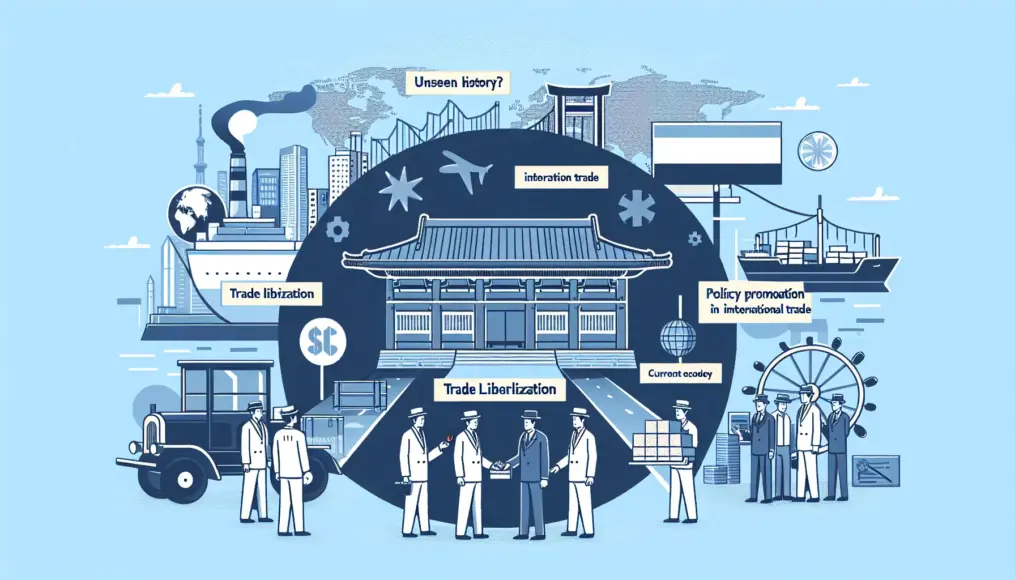Abenomics has been one of the most talked-about economic policies in Japan, generating a mix of hope and skepticism. While many held high expectations for its potential, there are voices pointing out that the actual outcomes and societal impacts fell short of what was anticipated. In this article, we will delve into the factors behind the shortcomings of Abenomics and take a closer look at its true nature.
By understanding the background of the policy and how it was implemented, we can gain insights into how Abenomics influenced the Japanese economy. Additionally, we should consider the lessons it leaves for the future of Japan’s economy. Gaining a comprehensive understanding of Abenomics could provide us with important insights for our future.
- Overview of Abenomics and its implementation background
- Evaluating the gap between economic growth achievements and expectations
- Exploring social impacts and implications for future economics
What Was Abenomics?
Abenomics drew considerable attention as a significant economic policy initiative in Japan. Launched in 2012, this approach aimed at revitalizing the economy and garnered high hopes from the public. However, opinions on its outcomes are mixed, with many voices declaring it a failure. In this section, we’ll delve into the details of Abenomics, exploring the policy framework and the context in which it was implemented, while considering why this policy was deemed important.
Overview of the Policy
Abenomics is based on the “three arrows” strategy put forth by Prime Minister Shinzo Abe’s administration. These three arrows consist of monetary easing, fiscal stimulus, and growth strategies. Notably, monetary easing aimed to eradicate deflation through large-scale fund supply by the Bank of Japan. This policy was expected to boost corporate investment and spur economic growth.
- Abenomics is an economic policy based on the “three arrows”
- It consists of three pillars: monetary easing, fiscal stimulus, and growth strategies
- It was highlighted as a measure to escape deflation
Context of Implementation
The backdrop for this policy was a prolonged economic stagnation. Following the Lehman Brothers crisis, the Japanese economy faced a downturn and remained in a deflationary state. In an effort to break this cycle, the Abe administration introduced Abenomics, aiming to restore economic growth. However, as expected results failed to materialize, criticisms regarding the failure of Abenomics began to surface.
- Long-term stagnation in the Japanese economy serves as the backdrop
- Measures aimed at overcoming deflation post-Lehman Brothers crisis
- The gap between expectations and reality influenced the evaluation of Abenomics
Evaluating the Successes and Failures of Abenomics
Abenomics remains a contentious topic when it comes to assessing its economic policies. Initially, there was a surge of optimism surrounding its implementation, but evaluations of actual economic growth and effectiveness have led to mixed opinions. In this section, we’ll take a closer look at the economic growth attributed to Abenomics and the gap between expectations and reality.
Economic Growth Achievements
The policies of Abenomics did lead to a temporary boost in economic growth. Notably, improvements in corporate performance and rising stock prices were among the reported successes. However, it is also true that sustainable growth has been elusive, and the economy has experienced ongoing instability. These fluctuations raise questions about how successful Abenomics truly has been.
- Temporary improvements in economic growth were observed
- Reports of better corporate performance and rising stock prices
- Sustainable growth was not achieved
The Gap Between Expectations and Reality
Given the high expectations surrounding Abenomics, many people felt disappointed by the actual outcomes. There was a strong demand for rising wages and stable employment, yet these expectations were largely unmet. This disconnect has fueled criticisms pointing to the failures of Abenomics.
For those interested in a deeper understanding of the impact of Abenomics, we recommend checking out this article: “What is the Impact of Fiscal Deficits? Exploring the Complex Relationship Between Economy and Politics.” This piece provides valuable insights into how fiscal deficits affect both the economy and politics, and it sheds light on the context and outcomes of Abenomics’ policies.
- Abenomics came with high expectations
- Wages and employment stability were not realized
- The disparity between expectations and reality has led to criticism
The Social Impact of Abenomics
Abenomics, Japan’s economic policy initiative, aimed to stimulate economic growth, but it has also had various social repercussions. In particular, the effects on the job market and social inequality highlight both the successes and failures of the policy. This section will delve into the impact of Abenomics on employment and the changes in social disparities.
Impact on the Job Market
Following the introduction of Abenomics, there were reports of a temporary increase in employment. As corporate performance improved and job openings surged, many people were able to secure jobs. However, this surge came with a rise in non-regular employment, leading to a growing number of individuals unable to find stable work. With concerns about the quality of employment deteriorating, it’s worth questioning whether there has truly been an improvement in the job market.
- Reports indicate a temporary increase in employment
- The rise in non-regular employment is a significant concern
- There are worries about declining job quality
Changes in Social Inequality
The effects of Abenomics are also evident in the widening social gap. While economic policies have benefited a select group of wealthy individuals, the everyday lives of the general populace have not seen significant improvement. This growing disparity has sparked discontent throughout society, resulting in more people feeling excluded from the benefits of economic growth. Some view this as a deepening of social divides, contrary to the policy’s original intentions.
For those looking to further explore the social implications of Abenomics, we recommend this article on “The Economic and Social Impact of Declining Birth Rates.” In a Japan facing declining birth rates, examining the economic and social consequences helps illuminate how current policies are affecting society.
- Concerns have been raised about the widening social gap
- The disparity between the wealthy and the general public has increased
- More people are feeling left out of the benefits of economic growth
Insights for the Future of the Japanese Economy
The lessons learned from the implementation of “Abenomics” will serve as crucial guidelines for Japan’s economic future. By analyzing the successes and failures of these policies, we can identify key points to consider for upcoming economic measures. In this section, we will explore the lessons from Abenomics and contemplate the outlook for the future.
Lessons from Policy Implementation
The biggest takeaway from the shortcomings of Abenomics is that sustainable growth is essential for effective economic policy. It’s not enough to see only temporary improvements in numbers; policies must benefit the entire population. Additionally, we need to focus on the quality of employment and address social inequalities, ensuring that every citizen can feel the positive effects of economic growth.
- Sustainable growth is crucial for economic policy
- Policies must benefit the entire population
- Attention to job quality and social disparities is necessary
Future Outlook
For the Japanese economy moving forward, the shift towards digitalization and a green economy will be key. Investment in these areas is essential to create new industries and stabilize employment. Furthermore, increasing the transparency of economic policies will be important for gaining public trust. By advancing policies with a forward-looking perspective, Japan can effectively leverage the lessons learned from Abenomics.
If you’re interested in gaining a deeper understanding of the future outlook for Japan’s economy, I recommend checking out this article: “Predictions for the National Pension System: Key Points to Know.” It provides a detailed analysis of the current status and future possibilities of the national pension system, offering important insights as part of the broader economic policy considerations.
- The shift towards digitalization and a green economy is key
- Creating new industries and stabilizing employment are important
- Increasing transparency in economic policy to build trust
Conclusion
Abenomics initially generated a lot of hope as Japan’s economic policy, but its results have not lived up to expectations. While we did see some temporary economic growth and an increase in employment during its implementation, the ongoing issues of sustainable growth, the quality of jobs, and social inequality remain unresolved. This highlights that the shortcomings of Abenomics offer crucial lessons for future policy-making.
Looking ahead, Japan’s economy must focus on digitalization and environmental considerations, with a strong demand for transparent policies. Drawing from the lessons of Abenomics, it’s essential to implement measures that allow all citizens to feel the benefits of economic growth. This could pave the way for a brighter future.
- Abenomics yielded only temporary results
- The quality of jobs and social inequality have not improved
- Moving forward, digitalization and transparency are key
In this way, it is imperative to harness the lessons learned from Abenomics to advance policies for the future. We encourage you to share your thoughts and opinions in the comments!



Comment